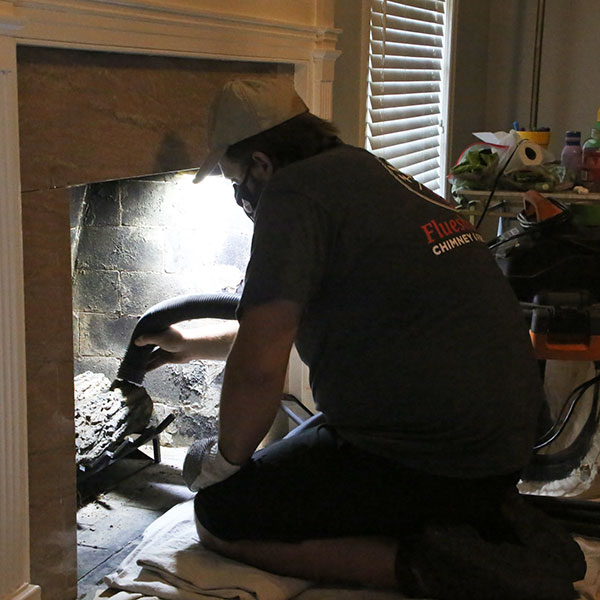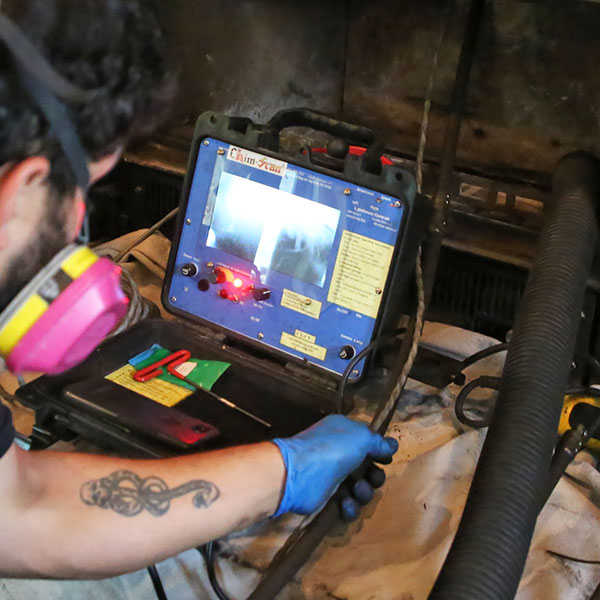Things You Should Know About Fireplaces
There is nothing cozier than relaxing beside a warm fireplace on those cold and dreary days. Fireplace home heating in the winter is an economical source of heating, but they also continue to provide a warm and inviting ambiance throughout the year. It’s why fireplaces continue to be one of the most preferred home features. However, there are a few things homeowners should know about fireplaces to keep their homes and family safe.
 Hire a Chimney Sweep to Clean the Fireplace and Chimney.
Hire a Chimney Sweep to Clean the Fireplace and Chimney.
One of the most important things a homeowner can do to protect their home is to hire a chimney sweep to clean the chimney and fireplace. Creosote, a natural by-product of combustion, adheres to the interior masonry, flue liner, and other components. It hardens into a dark, tarry material that is very flammable. Although gas fireplaces burn cleaner with significantly less creosote, they still need cleaning. The gases created during combustion are corrosive and can damage the ceramic logs and masonry without regular cleaning. The chimney sweep will also remove any small animals, pests, and debris that may be blocking the flue so that smoke, soot, and fumes aren’t forced out of the fireplace and into the living space.
Make Sure the Chimney Cap is Secure.
Homeowners should also check to ensure the chimney cap is secure. The chimney cap is an accessory that is installed on top of a masonry chimney. In addition to preventing moisture intrusion, it helps keep small animals, pests, leaves, and twigs from getting into the chimney and blocking the flue. However, strong winds and heavy rains can damage the chimney cap causing it to separate from the chimney allowing rainwater to leak in the fireplace.
Repair or Replace Damaged Flashing.
Damaged flashing is one of the most common causes of chimney leaks. The flashing is the sheet metal that seals the seam where the chimney meets the roof. If it is improperly installed, warped, or deteriorating, water will leak through the gaps and damage the attic, roof deck, and ceiling. Water stains around the walls or ceiling near the fireplace signify that the chimney flashing may be damaged.
Look for Damaged Bricks and Mortar.
Bricks and mortar are porous materials that absorb moisture, accelerating its deterioration. The constant freezing and thawing during the winter can take its toll on the masonry, causing cracks in the bricks and mortar. As the water damage progresses, bricks begin to chip, flake, and crumble, and the decaying mortar leaves gaps in the mortar joints. Moisture can leak through these gaps in the masonry and cause significant damage to the chimney, fireplace, and home. When caught early, tuckpointing can repair damaged bricks and mortar. However, severe damage may require a complete or partial chimney rebuild.
Only Burn Seasoned Wood.
Homeowners should only burn wood that has been seasoned or dried for at least six months. Seasoned wood has a much lower moisture content than freshly cut wood. As a result, it will burn cleaner with less creosote. Seasoned wood will also burn hotter and last longer.
Don’t Toss Your Christmas Tree in the Fireplace.
Homeowners should never dispose of a Christmas tree in the fireplace. The pine needles contain sap that is very flammable and can spark a fire, especially when there is already creosote in the chimney. A chimney fire can cause severe damage to your chimney, fireplace, and your home. Check with your local municipality for proper Christmas tree disposal.
 Get an Annual Chimney and Fireplace Inspection.
Get an Annual Chimney and Fireplace Inspection.
Whether you have a gas or wood-burning fireplace, the National Fire Protection Association (NFPA) recommends annual chimney inspections. Yearly chimney inspections are necessary to ensure your chimney, vents, and attached heating appliances are not a fire or safety hazard. A professional chimney sweep will also let you know if your chimney and fireplace need cleaning.
The post Things You Should Know About Fireplaces appeared first on Fluesbrothers Chimney Service.